Decisive Edge Newsletter | Training | September 2023
Newsletter Sponsors:
Combined and joint exercises – when is bigger better?
Military exercises are conducted at many levels, can take different forms and have widely varying aims. At their most basic, they are a vehicle to train and test individual and collective skills in conducting tactical operations, no matter what the domain.
A company commander taking his troops through battle drills, a pilot carrying out dry bombing runs or a frigate doing anti-submarine warfare drill are all after the same sort of thing.

Geospecific simulation with game quality graphics for the military training market. Find out more.
These are the ‘sets and reps’, the repetitive evolutions that build competence in the basics and confidence in fellow members of the team. This is how military organisations become good at what they do and stay good.
This however is not enough in a world where any operation is joint (involves more than one domain) and often combined (involves forces of more than one nation). This makes things far more complicated, particularly at higher levels of command.
NATO, quintessentially a joint and combined organisation, offers a useful definition of exercises. A recent document states: ‘Exercises are important tools through which the Alliance tests and validates its concepts, procedures, systems and tactics. More broadly, they enable militaries and civilian organisations deployed in theatres of operation to test capabilities and practice working together efficiently in a demanding crisis situation.’
And this is the key aspect of exercises at higher levels. As the document goes on to note, they will test and validate structures (concepts, doctrine, procedures, systems and tactics) that must function together. Most importantly they will test and practice interoperability.
The document says that ‘forces must be able to work together effectively despite differences in doctrine, language, structures, tactics and training. Interoperability is built, in part, through routine inter-forces training between NATO member states and through practical cooperation between personnel from Allied and partner countries’.

Providing mission-critical training and equipment, this elevated level of innovation can only be provided by the best in the industry. Visit FlightSafety.com.
While this refers particularly to combined operations, the need to ‘work together effectively’ is equally true, if not more so, for joint operations within a single national environment.
It is sometimes surprising how little different services within one country know of each other’s activities, and how difficult it can be to achieve interoperability, particularly at higher levels.
At the tactical level units and individuals find ways to make technical interoperability work, bending rules and devising ad-hoc solutions, although the more you work and train together the fewer hurdles there are to overcome.
But the operational and strategic level is a different matter.
Here it is as much about understanding each other’s thought processes, priorities and procedures as it is about technical interoperability, although this remains important, particularly when it comes to sharing data across domains. Hence the US drive for Joint All Domain Command and Control (JADC2), and similar initiatives in other countries.
The only way really to test this understanding, or lack of it, is to exercise, both at tactical level and higher. Sometimes this can be achieved solely through a live exercise, but as it is a truism that the value of an exercise to the individual is in inverse proportion to its size and scope, including a constructive element with virtual forces can be more valuable. This also allows greater scope in devising the scenario and the use of a wider spectrum of forces.

A recent example is the USN’s Large Scale Exercise 2023 (LSE 23), which took place in August. According to a navy release it involved ‘six navy and marine corps component commands and seven US numbered fleets… [merging] real-world operations with virtually constructed scenarios to create a realistic training environment’.
Illustrating the value of exercising on the grand scale, Lt Gen Brian Cavanaugh, commander, Marine Forces Command said: ‘This is an exercise where we can bring all of our experiences together and learn from each other… and you don't get that until you come together and do an exercise like this. The challenges we encountered during LSE 23 only help us in our continuum of learning – from the tactical unit, up through the highest levels of decision-making.’
That was an example of a national exercise. In Europe the Joint Expeditionary Force (JEF), which is outside the NATO structure, conducts regular exercises. The JEF is a ten-country multinational partnership that can act independently in its own right. It can also be deployed in support of NATO or other cooperative ventures. With the UK as framework nation it is principally composed of Baltic and Scandinavian countries.
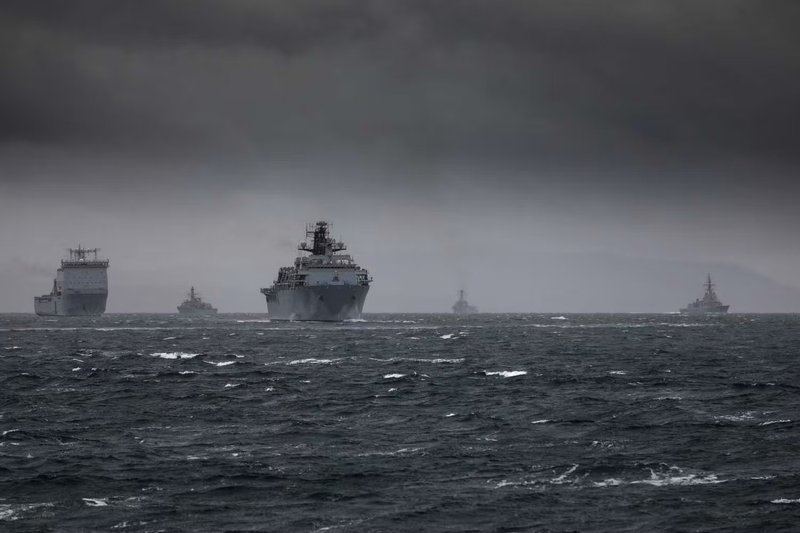
Above: The Joint Expeditionary Force’s maritime Exercise Joint Warrior 23-1 complemented the land-based Joint Viking 23 to create a complex multi-domain environment. (Photo: UK MoD/Crown Copyright)
One of its recent exercises was Joint Warrior 23-1. According to the UK MoD it was designed as the maritime domain’s contribution to Joint Viking 23, a large-scale land-focussed training event orchestrated by the Norwegian Armed Forces in the High North. Both elements were delivered as one combined activity by the Norwegian Joint Headquarters and UK Joint Training and Exercise Planning Staff.
The aim here is to provide a complex environment in which participants can train together to then deploy effectively as a combined joint task force. More than 20,000 personnel took part from 12 nations.
This level of activity across different domains in challenging environmental conditions places considerable demands both on command staffs and tactical units. But this is the whole point: to test the processes and procedures that enable these staffs and units from different domains to work together effectively they need to be stressed, as it is only then that weaknesses will be revealed.

Above: France’s multinational Exercise Orion 23 covered planning and deployment as well as the actual live training phase. (Photo: UK MoD/Crown Copyright)
A final example of a joint and combined exercise is France’s Orion 23 which took place in April and May. This was described by the French MoD as being aimed at training ‘the French armed forces within a multinational joint forces framework, with the goal of refocusing the armed forces and their various branches and administrative levels on a joint, multi-domain exercise in a contested environment [and involving] an inter-ministerial perspective extending beyond purely military concerns’.
Orion 23 was a multi-phase exercise which included planning and deployment as well as the actual live training phase. This arrangement is valuable as it provides opportunities for staffs to conduct the sort of detailed but more mundane interactions fundamental to effective multinational or -domain operations before moving to the high-tempo live phase.
It can help build solid relationships for when pressure increases, time is of the essence, and trust and confidence in your opposite numbers is essential.
Climate change – how military training will need to adapt
Climate change is beginning to affect every aspect of human activity and this impact is only likely to increase. Defence is no exception to this.
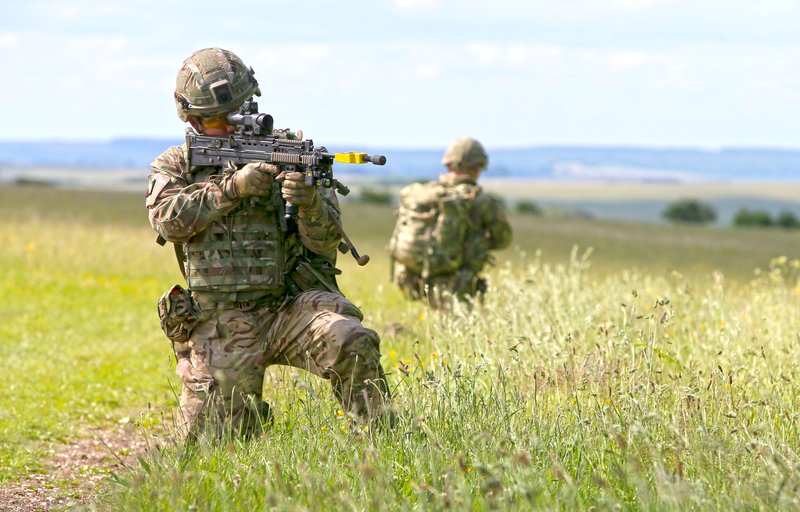
Above: Use of pyrotechnics is already restricted in some UK training areas during hot, dry weather due to the risk of wildfires. (Photo: UK MoD/Crown Copyright)
The recent UK House of Commons Defence Committee (HCDC) report ‘Defence and Climate Change’, published in August, opens with the statement: ‘In January 2023 the World Economic Forum listed climate change as the cause of the top six most severe risks to the planet over the coming decade. This directly matters to defence.’
While this will be felt across all defence activities, its impact on training is likely to be significant. The most obvious aspect is the effect of increased temperatures on individuals and the fallout from that, but extreme weather events will also play a part and could affect infrastructure and therefore disrupt training.
A possible increased requirement to be able to provide an effective military contribution to humanitarian and disaster relief (HADR) operations will also be a factor.
Training does not take place for its own sake, but is an essential component of readiness, a fundamental measure of military effectiveness. If training is restricted or curtailed, for whatever reason, it will have an impact on the affected unit’s readiness and hence its capability.
In the case of individual basic training, restrictions could affect the level of expertise reached or extend the length of the training period, affecting the training pipeline flow.
In 2020 the Rand Corporation undertook a study for the UK MoD called ‘Exploring the Implications of Climate Change for UK Defence and Security’. This identified specific impacts on training and infrastructure that would have a collateral effect.
Relating directly to training, the study concluded:
- Coordination of military training activities could become more challenging, as extreme climate events could reduce availability and accessibility of existing training sites. For example, they might be affected by flooding from heavy rainfall or drought-induced wildfires; the use of live ammunition and other pyrotechnics could be restricted which is already the case during dry spells on some UK training areas.
- Certain skills – particularly related to engineering, search and rescue, evacuation, construction, air traffic control and diplomacy – may increase in demand in the armed forces, with a corresponding need for tailored training in these areas.
- Health and safety issues related to flooding, extremely high temperatures and physically demanding training programmes may increase.
- Climate-related developments may alter design requirements for wargames and strategic exercises, including a need to adapt these for multiple simultaneous large-scale disasters.
As regards infrastructure the conclusions were:
- Military infrastructure in the UK and overseas may become increasingly vulnerable to climate-related events.
- Overheating of military installations will render some processes, such as movement of personnel and critical equipment, far more challenging.
- High temperatures could damage equipment in storage and increase demand for air conditioning, resulting in higher energy costs and impact on the environment.
- Degradation of civilian infrastructure (eg energy grids, railways, water systems and airfields) may also indirectly disrupt the MoD’s activities.
The study highlighted the likely impact of increased temperatures on individuals and stated: ‘In the UK the Wet Bulb Globe Temperature (WBGT) – measuring the effects of the environment on the human body – cannot exceed 20-25°C for service personnel wearing a single layer uniform without helmets, while carrying 25kg of weight at 6.4km/h for two hours. In the US, training must be adjourned if the WBGT exceeds 32°C.’
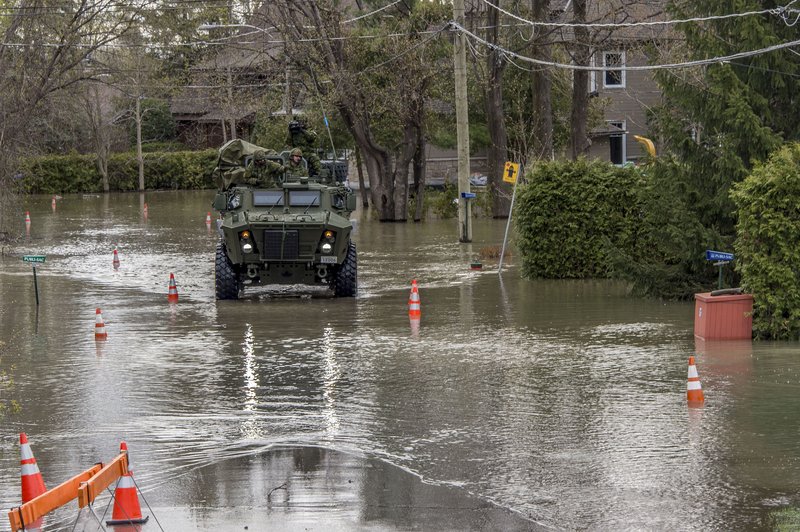
Above: Climate change is likely to increase the need for HADR training in the armed forces to deal with events like major flooding. (Photo: Canadian Armed Forces)
To mitigate this more physically demanding elements could be rescheduled to cooler parts of the day during those times of year when temperatures are likely to be in the danger zone, but this could result in the need for major changes to training programmes. However, there are much wider implications for those used to temperate climates.
The HCDC report notes that ‘the British Army Training Unit Kenya (BATUK) and the Jungle Warfare Division in Brunei deliver training to allow UK forces to operate in more inhospitable climatic conditions. Given rising temperatures generally, however, it may well be necessary to expand environmental training for more personnel, including those based for extended periods overseas, such as in Cyprus or the Middle East’.
It also follows that training evolutions currently undertaken in these environments may no longer be feasible in their existing formats and may have to be adjusted or even abandoned.
There are other mitigation methods apart from scheduling. A recent report in the US publication Stars and Stripes noted that cooling practices have been introduced at Fort Moore in Georgia to reduce soldiers’ body temperatures while training, such as on the ranges, in what has been a particularly hot year.
One of these techniques, the report said, is arm immersion, where individuals soak their arm in cold water in order to lower their core temperature, with the aim of reducing this by 1°C. The report added that this technique has been implemented during ‘various training courses when… soldiers are working outside in the heat and humidity’.
As already noted, the increased chance of extreme weather events can also have an impact on training, both in terms of disruption and effecting preparation. The Rand study cited the example of the US 22nd Marine Expeditionary Unit which in 2018 had its certification for deployment delayed because of the impact of Hurricane Florence.
This is a good example of where disrupted training had a direct impact on readiness. A further Rand Corporation study in 2023, ‘Climate and Readiness – Understanding Climate Vulnerability of US Joint Force Readiness’, identified how climate hazards affect training in different ways.
Some effects are temporal, which can ‘permanently or temporally constrain training windows in terms of time of day, season or expected/unexpected disruptions’. Other are qualitative, affecting ‘the type and/or quality of training that can be achieved, or the alignment of training to anticipated deployment conditions, including training realism, changing training environments, and related issues’. The last type of effect is logistical, including impact on transport networks and supply chains.

Above: More personnel may need specialist training for operations in hot environments, such as that provided by the British Army in Kenya. (Photo: UK MoD/Crown Copyright)
If support of HADR operations is going to increase in importance, then more training will be required, particularly for commanders and staff who will have to deal with an unaccustomed set of problems and with different agencies and relationships. Inevitably this will be at the expense of training for other eventualities.
The bottom line is the effect on readiness. If you can no longer train in the way you want to, when and how you want to, and where you need to, your readiness will be affected and hence a key element of capability is degraded which ultimately feeds into a decreased deterrent effect.
The difficulties and challenges to training regimes and programmes caused by climate change that are already emerging and those looming on the horizon are going to need innovative solutions. These need to be addressed in anticipation of their being required, not as a response.
How the US Army is spending billions on modernising training facilities in Europe
The US Army’s commitment to the European and African theatre was reinforced recently by the announcement of commencement of a major redevelopment programme at Grafenwoehr in Bavaria in Germany.
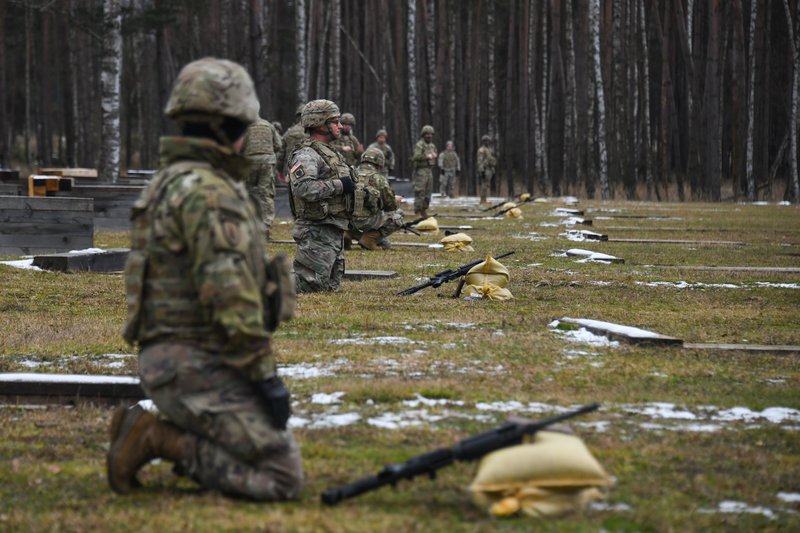
Above: The ranges at Grafenwoehr are use for a broad spectrum of training activities by US and allied forces. (Photo: US Army)
Grafenwoehr is home to the US Army’s 7th Army Training Command (7 ATC), whose mission is to:
- Deliver ready, trained, and equipped forces for operational demands.
- Resource training readiness for all of US Army Europe and Africa’s assigned and allocated forces throughout the US European Command area of operations.
- Lead the army in developing allied and partnered nation interoperability; provide the army with an active learning, near-peer environment to press modernisation initiatives.
- Operate a combat training centre (CTC) that focuses on interoperability and training brigade combat teams.
The Grafenwoehr Training Area (GTA) which adjoins the base, provides comprehensive facilities for live training, particularly armoured manoeuvre warfare.
According to 7 ATC information it encompasses 233 sq km with over 113km of tank trails and over 241km of secondary roads. It has 44 digitally connected computerised ranges, the most of any US Army training area.
GTA provides 43 artillery position areas, 24 mortar firing points, two airfields, three surveyed drop zones, three demolition areas and two dig sites for engineer training, plus two main impact areas and three impact areas associated with specific ranges.
GTA is owned and operated by the US Army’s Training Support Activity Europe (TSAE), which is responsible for all its ranges and local training areas on the continent.
The facilities at Grafenwoehr are used by both US and allied troops for exercises, pre-deployment training or other events. Currently they are accommodated in what Scott Ghiringhelli, 7 ATC public affairs representative, described to Shephard as ‘the dated facilities at Camp Aachen, Camp Normandy, Camp Algier and Camp Kasserine’, which are different complexes within the base.
The US Army has therefore embarked on a major modernisation programme, the Operational Readiness Training Complex (ORTC), the first phase of which was launched with a ground-breaking ceremony at the beginning of August. An ORTC will be large enough to accommodate a complete brigade of 5,000 personnel, with a surge capacity of 9,500.
The overall plan, which will extend ‘over the course of decades’, is for three ORTCs to be built. The first, which will cost about $1.3 billion, will see 47 buildings constructed over about ten years on a 130-acre site, plus infrastructure, a road network, utilities and so on. This project was launched in August.
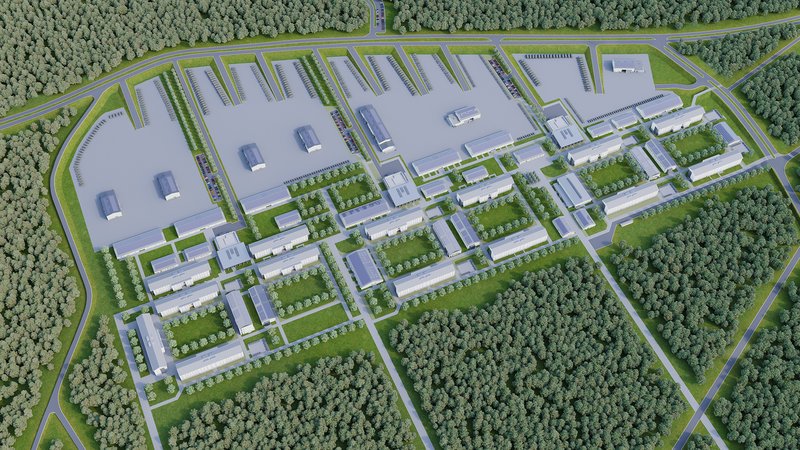
Above: A 3D rendering of the first Operational Readiness Training Complex development at Grafenwoehr. (Image: US Army)
According to Ghiringhelli the first construction contract was awarded in 2023 and focuses on site preparation and developing infrastructure for the first ORTC being built. This will be roughly to the west of the existing Camp Aachen and Camp Algier.
He said that once enough new facilities and sites come online to host enough troops to eliminate the need for the existing, dated sites, the old camps will be cleared to make way for new ORTC construction.
This infrastructure and site preparation work is expected to continue into 2024, meaning there will not be traditional vertical construction visible on new buildings until well into 2024, he added.
The facilities planned for each site will include a brigade headquarters (HQ), seven battalion and seven company HQs, accommodation for officers and soldiers, three dining facilities, seven vehicle maintenance facilities, and vehicle parks.
Ghiringhelli said that the ORTC project is being delivered by the US Army Corps of Engineers, Europe District, in collaboration with US Army Europe and Africa, US Army Garrison Bavaria, German construction partners and others.
If the first ORTC is going to cost about $1.3 billion over ten years, the whole three-phase programme is likely to need at least $4 billion in funding at today’s prices, which is a substantial investment in an overseas training facility that is partly for the benefit of allies as well as US forces.
While it would probably be wrong to read too much into it, this project does provide an indication of a long-term commitment by the US to the European and African theatre.
Don't want to miss out on future Decisive Edge content? Make sure you are signed up to our email newsletters.













